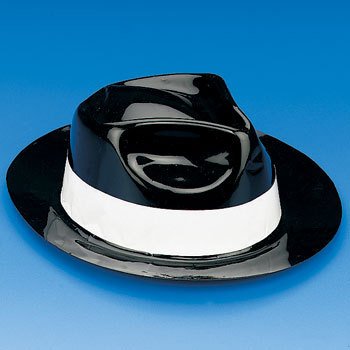Our volunteers haven't translated this article into বাংলা (বাংলাদেশ) yet. Join us and help get the job done!
This is an experimental technology
Because this technology's specification has not stabilized, check the compatibility table for usage in various browsers. Also note that the syntax and behavior of an experimental technology is subject to change in future versions of browsers as the specification changes.
Summary
The image-rendering CSS property provides a hint to the browser about the algorithm it should use to scale images. It applies to the element itself as well as any images supplied in other properties for the element. It has no effect on non-scaled images.
For example, if the natural size of the image is 100×100px but the page author specifies its dimensions as 200×200px (or 50×50px), then the image will be upscaled (or downscaled) to the new dimensions using the specified algorithm. Scaling may also apply due to user interaction (zooming).
| Initial value | auto |
|---|---|
| Applies to | all elements |
| Inherited | yes |
| Media | visual |
| Computed value | as specified |
| Animatable | no |
| Canonical order | the unique non-ambiguous order defined by the formal grammar |
Syntax
image-rendering: auto; image-rendering: crisp-edges; image-rendering: pixelated; /* Global values */ image-rendering: inherit; image-rendering: initial; image-rendering: unset;
Values
auto- Default value, the image should be scaled with an algorithm that maximizes the appearance of the image. In particular, scaling algorithms that "smooth" colors are acceptable, such as bilinear interpolation. This is intended for images such as photos. Since version 1.9 (Firefox 3.0), Gecko uses bilinear resampling (high quality).
crisp-edges- The image must be scaled with an algorithm that preserves contrast and edges in the image, and which does not smooth colors or introduce blur to the image in the process. This is intended for images such as pixel art.
pixelated- When scaling the image up, the "nearest neighbor" or similar algorithm must be used, so that the image appears to be composed of large pixels. When scaling down, this is the same as 'auto'.
optimizeQuality and optimizeSpeed present in early draft (and coming from its SVG counterpart) are defined as synonyms for the auto value.Formal syntax
auto | crisp-edges | pixelated
Examples
/* applies to GIF and PNG images; avoids blurry edges */
img[src$=".gif"], img[src$=".png"] {
image-rendering: -moz-crisp-edges; /* Firefox */
image-rendering: -o-crisp-edges; /* Opera */
image-rendering: -webkit-optimize-contrast;/* Webkit (non-standard naming) */
image-rendering: crisp-edges;
-ms-interpolation-mode: nearest-neighbor; /* IE (non-standard property) */
}
div {
background: url(chessboard.gif) no-repeat 50% 50%;
image-rendering: -moz-crisp-edges; /* Firefox */
image-rendering: -o-crisp-edges; /* Opera */
image-rendering: -webkit-optimize-contrast;/* Webkit (non-standard naming) */
image-rendering: crisp-edges;
-ms-interpolation-mode: nearest-neighbor; /* IE (non-standard property) */
}
Live Examples
image-rendering: auto;
78%  100%
100%  138%
138%  downsized
downsized  upsized
upsized 
image-rendering: pixelated; (-ms-interpolation-mode: nearest-neighbor)
78%  100%
100%  138%
138%  downsized
downsized  upsized
upsized 
image-rendering: crisp-edges; (-webkit-optimize-contrast)
78%  100%
100%  138%
138%  downsized
downsized  upsized
upsized 
Specifications
| Specification | Status | Comment |
|---|---|---|
| CSS Image Values and Replaced Content Module Level 3 The definition of 'image-rendering' in that specification. |
Candidate Recommendation | Initial definition |
Though initially close from the SVG image-rendering property, the values are quite different now.
Browser compatibility
| Feature | Chrome | Firefox (Gecko) | Internet Explorer | Opera | Safari (WebKit) |
|---|---|---|---|---|---|
Basic support (auto) |
(Yes) | 3.6 (1.9.2) | No support[1] | 11.60 | (Yes) |
crisp-edges |
No support | 3.6 (1.9.2)-moz | No support | 11.60-o | (Yes) [2] |
pixelated |
41.0 | No support (bug 856337) | No support | 26.0 | (Yes) [3] |
optimizeQuality, optimizeSpeed |
No support | 3.6 (1.9.2) | No support | 11.60 | (Yes) |
| Feature | Android | Firefox Mobile (Gecko) | IE Phone | Opera Mobile | Safari Mobile |
|---|---|---|---|---|---|
| Basic support | 41.0 | ? | ? | ? | ? |
Notes
[1] Internet Explorer 7 and 8 supports the non-standard -ms-interpolation-mode property with two values (bicubic and nearest-neighbor):
- applies only to images (JPG, GIF, PNG, ...)
- in IE7 only for images without transparency
- does not inherit
- default value IE7:
nearest-neighbor(low quality) - default value IE8:
bicubic(high quality) - obsolete as of IE9
[2] Supported with a non-standard name: -webkit-optimize-contrast.
[3] WebKit Nightly support, see bug
Canvas can provide a fallback solution for crisp-edge/optimize-contrast through manual imageData manipulation.